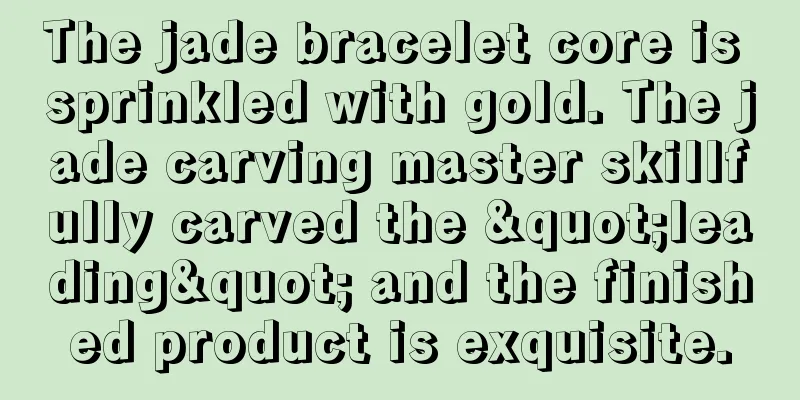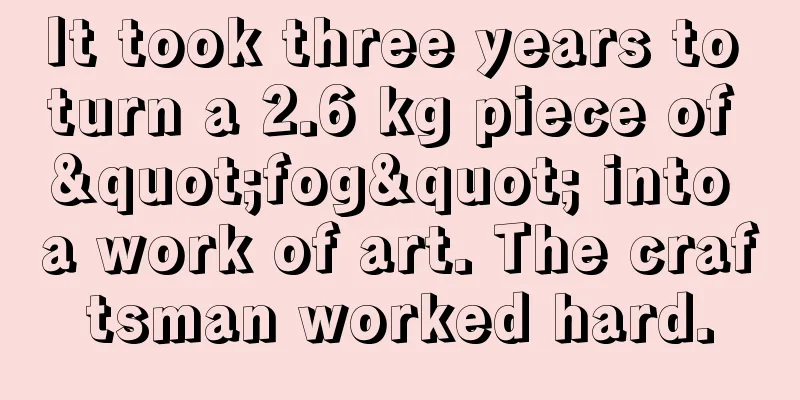Ten identification methods of jadeite, you will be an expert if you learn them

|
Jade is generally divided into three grades, A, B, and C. Only Grade A jade is natural jade, which is what people often call the authentic product. Jadeite is one of the most precious varieties of jade, but the market is flooded with various counterfeit jadeites, making it difficult to distinguish the real from the fake. Here are ten identification methods, I hope they can help you. First, look at the color. Jadeite with particularly bright color and full green is usually very expensive, so you must be especially cautious. Second, measure the hardness. Jade is very hard and can be used to scratch glass. Glass plate (Mohs hardness 5.5) can generally leave streaks on the glass plate, while the jade itself remains intact. Fake jade is generally softer and cannot scratch glass. (Although this may measure hardness, it will still damage the jade, so I personally do not recommend trying this.) Hardness test Third, listen to the sound. Tap gently with other jade or coins, and listen carefully to the sound of the finished products hitting each other. Natural jade pieces, especially those with good quality, will produce a pure and pleasant "steel sound" when struck. The sound of B-grade jadeite is dull and hoarse. Listen to the sound Fourth, look at the color. The color is pure, rich, uniform and appropriate, and it has the potential to maintain and appreciate in value. The ones with a small amount of green heads and brighter colors are better. Fifth, look at the gloss. When jade is illuminated by light, some parts of it appear foggy or spotted, while green jade has varying shades and green dots; while glass products only have bubbles and the color is basically uniform. Sixth, look at the impurities. Use a spotlight to check for hidden colors. If it contains shiny mineral particles and is in clumps, it will seriously affect the quality of the jade. Seventh, look at transparency. When observed under strong light, the higher the transparency, the better. Jade with high transparency is crystal clear and looks vivid and lively no matter what color it is. Eighth, look at the craftsmanship. The best ones are smooth surface, well polished and in good shape. For example, when carving flowers, see whether the lines are smooth and whether the layout is reasonable. Jade jewelry with good workmanship, fine carving and rich cultural connotations is extremely valuable whether for collection, appreciation or wearing. Ninth, look for cracks. It is possible that cracks exist in jadeite raw stones, or they may be caused by later processing. The fewer cracks, the better, and the shorter the length, the better. Tenth, look at the certificate. The issuing agency of the appraisal certificate must be authorized after national qualification certification. Generally, the certificate must have at least the CMA mark, which means that the product is recognized by the relevant national agencies. Carefully check whether the product's photos, total mass, dimensions or other written descriptions are consistent with the certificate. You can query relevant information by entering the certificate number on the appraisal certificate issued by a formal appraisal agency online. fcgc66 fcpf18 |
<<: How to distinguish good and bad jade carvings, experts tell you
Recommend
Is jade investment worthwhile? Should you invest in jade?
Jadeite, the king of jade, itself contains profou...
Tips for choosing jade pendants
Jade pendants are the first choice of many jade l...
Such bold and avant-garde jade carvings are difficult to understand at first glance, but they are endless when you savor them carefully!
Jade is superior to stone because of its texture,...
The correct process for appreciating jadeite is like this. Did you get it wrong?
I believe that many people know that jade is most...
The essence of jade carving: discard the dross and retain the essence
Jadeite is the most valuable of all jade types an...
Identification of C-grade Jadeite
When identifying C-grade jadeite, the focus is on...
What should I do if the jade bracelet breaks? Several repair methods make it more valuable
When wearing jade bracelets on the hands, they wi...
What does Jade Blue Water Type mean? What kind of blue water jade is good?
There are many ways to classify jade, and there a...
Why is there always a glass of water on the counter in a jade shop?
When choosing jadeite, there are five things you ...
I ignored my friend's advice and insisted on buying the jadeite raw stone. However, after opening the window, I was speechless!
Today, I bring you a piece of fine water stone fr...
When playing with jade, do you know the places that jade is "afraid of"?
Jade is known as the "King of Jade" for...
I spent millions to find a green jade bracelet, but it turned out to be a fake.
When jade lovers buy jade, what they fear most is...
Use these three methods to identify the authenticity of jade
I have talked about many methods of identifying n...
Why do people say “Men wear Guanyin and women wear Buddha”? What do you know about the meaning of jade figure carvings?
If you love jade, you must have heard this senten...
There is something fishy about the gem display cabinet
Ms. Zhang heard that Myanmar's jewelry and ja...









